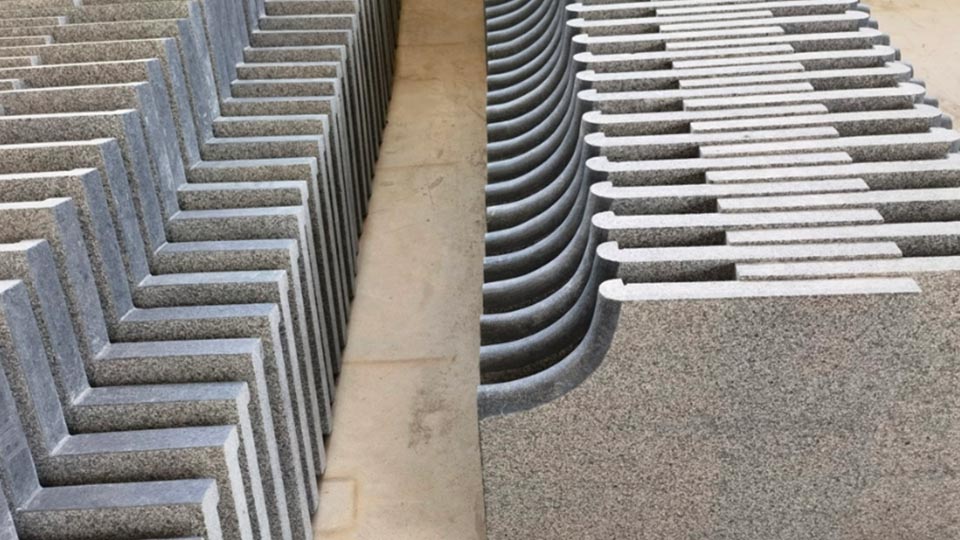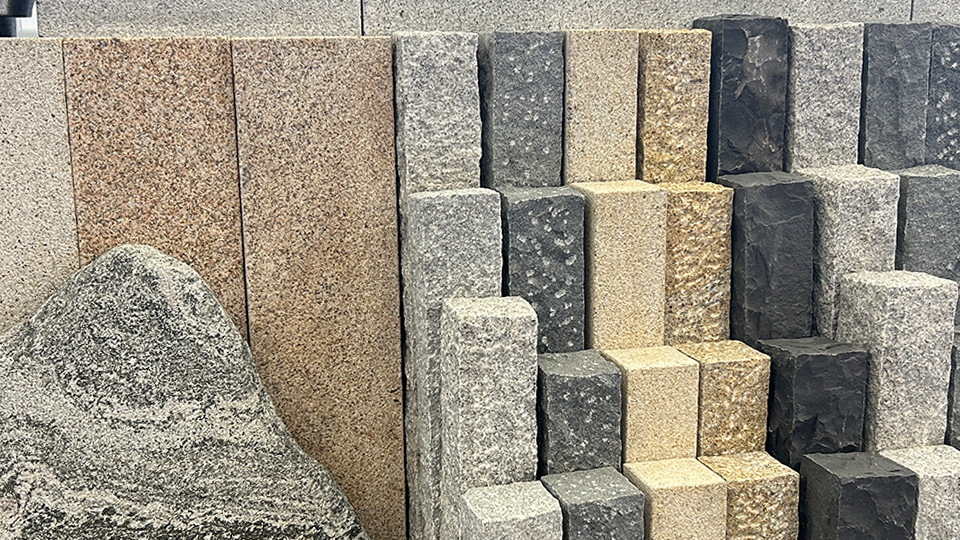

How to Remove Stains from Granite: A Technical Guide
Granite, prized for its durability and aesthetic appeal, is a popular choice for countertops, flooring, and other architectural surfaces. While inherently resilient, granite is not entirely impervious to staining. Spills left unattended can penetrate the stone's porous structure, especially if the sealant is compromised, leading to unsightly marks. Understanding the nature of the stain and employing the correct removal techniques are crucial to restoring the beauty of your granite surfaces. This technical article provides a comprehensive guide to identifying common granite stains and detailing effective methods for their removal, emphasizing safety and best practices.
Understanding Granite and Stain Formation:
Granite is an igneous rock composed primarily of quartz, feldspar, and mica. Its porosity, while generally low, varies depending on the specific type and the quality of its sealant. Sealants are applied to create a barrier, preventing liquids and oils from seeping into the stone's pores. However, sealants can degrade over time due to wear and tear, exposure to certain chemicals, or improper cleaning, making the granite more susceptible to staining.
Stains on granite occur when a substance penetrates the surface and becomes trapped within the pores. The type of stain dictates the most effective removal method. Categorizing stains based on their source is the first step towards successful remediation. Common categories include:
Oil-Based Stains: These stains, caused by cooking oils, grease, butter, or cosmetics, typically appear as dark patches and can be challenging to remove as oil penetrates deeply into the stone.
Water-Based Stains: These include stains from coffee, tea, wine, juice, and food spills. They often leave a ring or a discolored area. While some may evaporate, others can leave a lasting mark, especially if the liquid is acidic or contains pigments.
Ink and Dye Stains: Ink from pens, markers, or dyes from fabrics can penetrate granite and leave persistent stains.
Organic Stains: These are caused by mold, mildew, or food remnants and often appear as dark or discolored spots.
Rust Stains: Metal objects left on granite surfaces, especially in damp conditions, can leach rust and create reddish-brown stains.

Hard Water Stains: Mineral deposits from hard water can leave a cloudy or white film on the granite surface, particularly around sinks and faucets.
Etching: While not technically a stain, etching is a dull mark or discoloration caused by acidic substances reacting with the minerals in the granite. It requires a different approach than stain removal.
General First Steps for Stain Removal:
Regardless of the stain type, immediate action is crucial to minimize its severity. Follow these initial steps:
Blot the Spill Immediately: Use a clean cloth or paper towel to blot the spill, working from the outside inwards to prevent it from spreading. Avoid wiping, as this can push the substance further into the granite.
Identify the Stain Source: Knowing what caused the stain will help determine the most effective removal method.
Avoid Harsh Cleaners: Never use abrasive cleaners, scouring pads, or highly acidic or alkaline cleaners (like bleach or ammonia) on granite, as they can damage the sealant and even etch the stone.
Specific Stain Removal Techniques:
Once you've identified the stain type, employ the following techniques:
1. Oil-Based Stains:
The goal with oil-based stains is to draw the oil out of the granite. A poultice is the most effective method:
Materials: Baking soda or cornstarch, water or acetone (pure acetone, not nail polish remover).
Procedure:
Create a thick paste by mixing baking soda or cornstarch with water for lighter-colored granite or acetone for darker-colored granite (test in an inconspicuous area first to ensure it doesn't dull the finish). The consistency should be similar to peanut butter.
Apply a thick layer of the paste (about ¼ to ½ inch) over the entire stained area, extending slightly beyond the edges.
Cover the poultice with plastic wrap and secure it with tape.
Allow the poultice to sit for at least 24 hours, or even 48 hours for stubborn stains. This allows the absorbent material to draw out the oil.
Remove the plastic wrap and let the poultice dry completely.
Gently scrape away the dried poultice with a plastic scraper or spatula.
Clean the area thoroughly with warm water and a mild dish soap.
Rinse with clean water and dry with a soft cloth.
Repeat the process if the stain persists.
2. Water-Based Stains (Coffee, Tea, Wine, Juice, Food):
For many water-based stains, a simple approach may suffice:
Materials: Warm water, mild dish soap, soft cloth.
Procedure:
Wipe the stained area with a damp cloth and mild dish soap.
Rinse thoroughly with clean water.
Dry the area with a soft cloth.
For more stubborn water-based stains, especially those with pigments, a poultice with hydrogen peroxide may be effective:
Materials: Baking soda, 12% hydrogen peroxide (available at beauty supply stores).
Procedure:
Mix baking soda with hydrogen peroxide to form a thick paste.
Apply the paste to the stain, cover with plastic wrap, and let it sit for 24 hours.
Remove the plastic wrap, allow the paste to dry, and scrape it away.
Clean the area with warm water and mild soap, rinse, and dry.
3. Ink and Dye Stains:
Removing ink and dye stains can be challenging. Try the following:
Materials: Baking soda, acetone or rubbing alcohol (test in an inconspicuous area first).
Procedure:
Mix baking soda with a small amount of acetone or rubbing alcohol to form a thick paste.
Apply the paste to the stain, cover with plastic wrap, and let it sit for several hours or overnight.
Remove the plastic wrap, allow the paste to dry, and scrape it away.
Clean the area with warm water and mild soap, rinse, and dry.
Repeat if necessary.
4. Organic Stains (Mold, Mildew, Food Remnants):
Materials: Baking soda, water, soft brush. For stubborn mold or mildew, a diluted bleach solution (test in an inconspicuous area and avoid prolonged contact) may be used with extreme caution.
Procedure:
For general organic stains, make a paste of baking soda and water.
Apply the paste to the stain and gently scrub with a soft brush.
Rinse thoroughly with clean water and dry.
For mold or mildew (use with caution): Mix a small amount of bleach with water (follow manufacturer's instructions for dilution). Apply to the stain, let it sit for a few minutes, and rinse thoroughly with water. Ensure good ventilation when using bleach.
5. Rust Stains:
Rust stains require a specialized approach:
Materials: Commercial rust remover specifically designed for stone (follow manufacturer's instructions carefully). A poultice of baking soda and water may have limited effectiveness on severe rust stains.

Procedure:
Apply the commercial rust remover according to the product instructions.
This usually involves applying the remover to the stain, allowing it to sit for a specific time, and then rinsing thoroughly with water.
Ensure the product is safe for granite and test in an inconspicuous area first.
6. Hard Water Stains:
Materials: White vinegar (use with caution and dilute), water, soft cloth. Commercial hard water stain removers for stone.
Procedure:
Mix equal parts white vinegar and water.
Apply the solution to the hard water stain and let it sit for a few minutes.
Gently scrub with a soft cloth.
Rinse thoroughly with clean water and dry.
For stubborn stains, you may need to repeat the process or use a commercial hard water stain remover specifically formulated for natural stone.
7. Etching:
Etching is damage to the granite itself, not a stain, and requires a different approach. Mild etching may sometimes be buffed out with a polishing compound designed for granite. Severe etching may require professional refinishing. Prevention is key: promptly wipe up acidic spills.
Preventing Future Stains:
The best way to deal with granite stains is to prevent them in the first place:
Seal Your Granite Regularly: Follow the manufacturer's recommendations for resealing your granite surfaces. This creates a protective barrier against spills. Perform the water test periodically (sprinkle a few drops of water; if it beads up, the sealant is likely intact; if it soaks in, it's time to reseal).
Wipe Up Spills Immediately: Don't allow spills to sit on the granite surface for extended periods, especially acidic liquids and oils.
Use Coasters and Placemats: Protect your countertops from spills and condensation by using coasters under drinks and placemats under food.
Avoid Placing Hot Items Directly on Granite: While granite is heat-resistant, extreme temperature changes can weaken the sealant over time. Use trivets for hot pots and pans.
Use Cutting Boards: Avoid cutting directly on granite surfaces, as this can scratch the sealant and potentially stain the stone.
When to Call a Professional:
For stubborn stains that do not respond to DIY methods, or if you are uncomfortable performing any of the techniques, it is best to consult a professional stone restoration specialist. They have specialized cleaning agents, equipment, and expertise to handle difficult stains without damaging your granite.
Conclusion:
Removing stains from granite requires patience, the correct techniques, and an understanding of the stain's nature. By acting promptly, identifying the stain source, and employing appropriate cleaning methods like poultices and gentle cleaning solutions, you can often successfully restore the beauty of your granite surfaces. Prevention through regular sealing and prompt spill cleanup remains the most effective strategy for maintaining the pristine condition of your granite for years to come. Always prioritize safety and consult professional help when dealing with stubborn stains or if you are unsure about any cleaning procedure.
Name: selena
Mobile:8613176910558
Tel:86-13176910558
Whatsapp:8619323167067
Email:409284553@qq.com
Add:Laizhou ,Shandong , Shandong Province, China